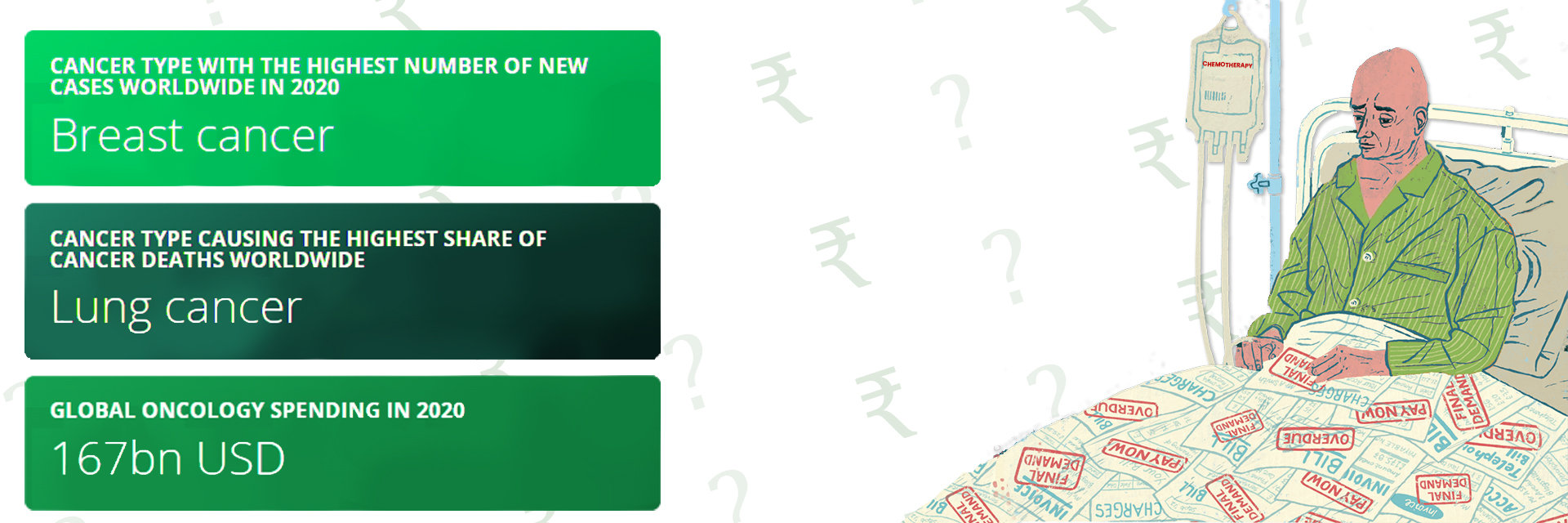Do you know hypocellular bone marrow can lead to anemia?
This condition means your bone marrow has fewer blood-forming cells than it should. That can lead to anemia, infections, and bleeding problems. But don't fear – we're here to break it down for you. Whether it's for you or a loved one, we're making the information accessible and easy to grasp.
So, let's dive in!

When we say "hypocellular," we're pointing out that there's a shortage of cells in the bone marrow. The bone marrow plays a vital role as the body's cell factory. It produces stem cells that transform into red and white blood cells, as well as platelets. These cells are essential for oxygen transport, infection defense, and blood clotting. As a rule of thumb, the younger you are, the more cells you have. Babies have nearly 100% cells, but by adulthood, it drops to 30–50%. If your cell count is lower than their age group's norm, it needs an investigation.
Have you ever wondered why this matters?
Why is identifying hypocellular bone marrow crucial?

Identifying hypocellular bone marrow isn't just a fancy medical term; it's vital. Here's why:
Monitoring Treatment: Observing how treatments like chemotherapy affect bone marrow is crucial.
Assessing Disease Severity: The number of cells in the bone marrow can indicate how severe a disease might be.
Directing Treatment Plans: Understanding hypocellularity helps doctors decide on the best treatment.
Watching for Disease Return: Changes in bone marrow can alert doctors if a disease returns after remission.
Checking Environmental Impact: Bone marrow tests can show if environmental factors have caused damage.
Observing Drug Reactions: For patients in drug trials, watching for changes in bone marrow is critical to ensuring safety.
Simply put, figuring out if someone has hypocellular bone marrow can be a lifesaver.
What causes hypocellular bone marrow?

So, what triggers hypocellular bone marrow? Let's examine the factors:
- Aplastic Anemia: Here, your bone marrow doesn't produce enough blood cells.
- Myelodysplastic Syndromes (MDS): A group of disorders causing insufficient healthy blood cells.
- Therapies: Chemotherapy and radiation can harm bone marrow cells.
- Certain Medications: Some can suppress the bone marrow.
- Viral Infections: Viruses like Epstein-Barr can hamper bone marrow function.
- Autoimmune Disorders: Diseases like lupus can attack bone marrow.
- Toxins and Chemicals: Benzene is one such chemical that is harmful to bone marrow.
- Inherited Conditions: Some genetic disorders can lead to bone marrow failure.
- Bone Marrow Diseases: Conditions like PNH.
Navigating the realm of hypocellular bone marrow can be challenging. But with knowledge in hand, you're empowered to make informed decisions. Remember, you're not alone in this journey, and understanding is half the battle.
Ready to learn more or need further guidance? Don't hesitate! Reach out to a specialist today and take charge of your health. Remember, it's always better to be informed.
How is hypocellular bone marrow diagnosed?
Worried about reduced blood cell production? Let's dive in to understand how Hypocellular Bone Marrow is diagnosed and what it means for you.
Steps in Diagnosis
- Complete Blood Count (CBC): This test measures the different types of blood cells in your body.
- Peripheral Blood Smear: It examines your blood cells more closely, looking at their size, shape, and appearance to understand bone marrow health.
- Aspiration: A procedure to remove a small amount of liquid from your bone marrow for testing.
- Biopsy
- Cytogenetic Analysis: This test allows cells from bone marrow to be cultured to look for chromosomal changes, aiding in diagnosing certain diseases.
- Flow Cytometry & Molecular Testing: These sophisticated tests analyze the properties of cells to identify any abnormalities.
- Viral & autoimmune testing: Tests designed to detect viral genetic material and autoantibodies that might impact bone marrow function.
- Exposure History: A review of your past exposure to toxins, medications, or radiation is important, as these can influence bone marrow health.
Once the puzzle is pieced together and the cause identified, the next step is crafting the right treatment plan. Sometimes, it's a team effort involving various specialists.
What Symptoms are Associated with Hypocellular Bone Marrow?

So, how does Hypocellular Bone Marrow show itself? It all hinges on which blood cell type is low.
Red Blood Cell Deficiency (Anemia):
- Feel unusually tired
- Skin looking pale or slightly yellow
- Experiencing dizziness, chest pain, or irregular heartbeat
White Blood Cell Deficiency (Neutropenia):
- Getting infections more often
- Having fever without any clear reason
- Wounds taking longer to heal
Platelet Deficiency (Thrombocytopenia):
- Easily bruising or bleeding
- Seeing tiny red spots under your skin
These symptoms might overlap with other conditions. So, always consult with a healthcare provider for a precise diagnosis. Don't just go by symptoms.
What are the treatment options for Hypocellular Bone marrow?
Treatment is tailored based on the root cause and how severe the condition is. Here's a breakdown:
- Supportive Care: Transfusions might be on the cards if anemia or thrombocytopenia is severe.
- Growth Factors: Injections that can boost the production of specific blood cells.
- Immunosuppressive Therapy: Useful when the issue arises from autoimmune disorders or infections.
- Stem Cell Transplantation: For acute cases, replacing damaged bone marrow with healthy stem cells might be the way to go.
- Medication Adjustments: If medications or toxins are the cause, altering them could lead to recovery.
- Addressing Root Causes: Treating the core condition causing hypocellularity is paramount.
- Antiviral Therapy: This counters viral infections, leading to bone marrow suppression.
Do you know?
Hypocellular bone marrow is often associated with Hypocellular Myelodysplasia Syndromes (h-MDS), which is a rare subtype of Myelodysplasia Syndromes (MDS). It accounts for 10-15% of MDS patients1. In a study conducted in Italy, out of 1945 MDS patients, 17% were recognized as having h-MDS
Lastly, always work in tandem with your healthcare team. Collaborative decisions ensure the best outcome for your health.
Take Action Now!
If any of this resonates with your experiences, don't wait. Schedule a consultation with a healthcare provider today. Every moment counts towards a healthier you.
Can hypocellular bone marrow lead to other health conditions?
Concerned about the repercussions of hypocellular bone marrow? You're not alone. This condition can, unfortunately, pave the way to other health issues.
Let's unravel what this might mean for your health journey.
- Anemia: Low red blood cell count can cause fatigue, paleness, and physical weakness.
- Infection Susceptibility: Reduced white blood cell count, or neutropenia, makes you more prone to frequent or severe infections.
- Bleeding Issues: Low platelet count, known as thrombocytopenia, can result in easy bruising and excessive bleeding from minor wounds.
- Persistent Fatigue: Ongoing tiredness may occur due to anemia and reduced function of the bone marrow.
- Risk of Hemorrhage: Severe thrombocytopenia can lead to spontaneous bleeding, potentially in vital organs.
- Immunodeficiency Challenges: Decreased white blood cells can compromise your body's ability to fight off infections, particularly bacterial and fungal ones.
- Delayed Wound Healing: A diminished white blood cell count can also impair your body's healing process.
- Risk of Bone Marrow Diseases: Persistent hypocellularity increases the risk of conditions like myelodysplastic syndromes (MDS) or acute myeloid leukemia (AML).
- Iron Overload: Excessive iron accumulation in the body leads to possible damage to organs.
- Complications from Treatments: Some treatments, including bone marrow transplants and immunosuppressive therapies, can have adverse effects.
Every individual's experience with hypocellular bone marrow is unique. Factors like its cause, the extent of suppression, and personal health variables can shape its complications.
Prioritize Your Health!
If you suspect any of these issues or are diagnosed with hypocellular bone marrow, seek expert medical guidance. Regular check-ups and a personalized care approach can make all the difference. Remember, knowledge and proactive care are your best allies in this journey. Schedule your consultation today.
Does hypocellular bone marrow affect daily life?
Hypocellular bone marrow—it might sound complex, but its impact on daily life can be tangible and multifaceted. Curious about what this means for you or a loved one?
Let's read below..

Navigating Daily Challenges
- Managing Fatigue: Anemia resulting from hypocellular bone marrow can lead to persistent fatigue, making daily activities challenging and exhausting.
- Limitations on Physical Activity: The fatigue and shortness of breath caused by anemia may restrict your ability to engage in physical or exercise routines.
- Increased Infection Precautions: Lowered levels of white blood cells, known as neutropenia, heighten the risk of infections, necessitating greater precautions and prompt medical attention when ill.
- Heightened Bleeding Risk: Thrombocytopenia, characterized by a low platelet count, can lead to an increased risk of bleeding and require more cautiousness to avoid injuries.
- Frequent Healthcare Appointments: Regular check-ups and treatments can disrupt your routine and require careful scheduling.
- Medication Schedules: Managing hypocellular bone marrow often involves adhering to a strict medication regimen, which adds to daily responsibilities.
- Dietary Adjustments: Nutritional modifications, such as increasing iron-rich foods, may be necessary for managing the condition.
- Emotional Health Considerations: The stress and anxiety associated with managing a chronic condition can have significant emotional impacts.
- Workplace and Educational Adaptations: You may need to negotiate adjustments in your job or academic commitments to accommodate your health needs.
- Selective Socializing: Fatigue and the need to avoid infections may affect your social interactions and the nature of your activities.
- Financial Planning for Healthcare: The costs associated with medical care for hypocellular bone marrow may require careful financial planning.
Remember: Though these challenges sound daunting, the proper medical care and support can enhance life quality. Explore treatments, lean on your healthcare team, and don't forget—your loved ones and support groups are there to help!
Understanding Hypocellular Bone Marrow's Health Implications
This condition doesn't stop with daily life disruptions. It can also lay the groundwork for other health challenges.
Spotting the Ripple Effects
- Anemia's Symptoms: Reduced red blood cell production can lead to fatigue, paleness, and weakness.
- Infection Battles: A dip in white blood cells comes with a heightened risk of infections—some potentially serious.
- Bleeding Woes: A platelet drop can usher in bleeding challenges, like prolonged bleeding from minor injuries.
- The Fatigue Factor: Both anemia and bone marrow suppression can cause chronic tiredness.
- Risk of Spontaneous Bleeding: Especially difficult if it's in crucial organs.
- Infection Risks from a Weakened Defense: Bacterial and fungal threats become more pressing.
- Healing Hurdles: Reduced white blood cell counts can slow wound recovery.
- Potential Bone Marrow Disorders: Risks of conditions like MDS or AML might increase.
- Iron Overload Issues: Regular transfusions might lead to excess iron, threatening organ health.
- Treatment Side-Effects: Procedures like bone marrow transplants come with their challenges.
Everyone's journey with hypocellular bone marrow is unique. Recognizing potential implications is step one. Partnering with medical professionals for tailored care? That's the key to navigating this path with confidence. Secure your health. Schedule your check-up now.
Are there any preventive measures for hypocellular bone marrow?

Navigating the complexities of hypocellular bone marrow might feel overwhelming, but knowledge is power.
Let's take a proactive approach together, shall we?
Zooming in on Prevention
- Dodge Toxins: Interacting with toxins, especially benzene in gasoline and some industries, can harm your bone marrow.
Are you working in such environments? Sticking to safety guidelines becomes your best defense.
- Medicine Use: Always take medicines as directed, especially strong ones like chemo.
- Cleanliness: Wash hands often and get vaccinated to avoid infections.
- Radiation Care: If you are around radiation at work, use safety gear.
- Genetic Checks: Consider genetic advice for family health risks.
- Health Tests: Regular blood tests can catch bone marrow issues early.
- Healthy Habits: Eat right, exercise, and don’t smoke to protect bone marrow.
Even with all these precautions, sometimes hypocellular bone marrow can still sneak up on us, particularly when genetics or unknown causes are at play. This is why early detection, paired with swift medical action, is your best plan.
Concerned about your risk or have a family history shadowing you? A chat with a healthcare professional or hematologist could be enlightening. Take charge of your health. Schedule a consultation today.
FAQs
Can hypocellular bone marrow occur in children?
Yes, hypocellular bone marrow can affect individuals of all ages, including children. It may be congenital or acquired.
Are there dietary changes that can help manage hypocellular bone marrow?
While a balanced diet is important for overall health, dietary changes alone are unlikely to reverse hypocellular bone marrow. Treatment usually focuses on addressing the underlying cause.
Is hypocellular bone marrow always a sign of a serious medical condition?
Not necessarily. Hypocellular bone marrow can be a temporary condition caused by factors like medications, but it can also be indicative of more serious disorders, so it's important to determine the underlying cause.
What is the prognosis for individuals with hypocellular bone marrow?
The prognosis varies depending on the underlying condition and its severity. Early diagnosis and appropriate treatment can significantly improve outcomes.
Can hypocellular bone marrow be hereditary?
In some cases, genetic factors may play a role in the development of hypocellular bone marrow. It can be passed down through families, but it can also occur spontaneously.
What is the role of a hematologist in managing hypocellular bone marrow?
Hematologists are specialists in blood disorders and are often involved in diagnosing and managing hypocellular bone marrow. They help determine the cause and recommend appropriate treatment.
Can hypocellular bone marrow lead to leukemia or other cancers?
While hypocellular bone marrow itself is not cancerous, it can be associated with conditions like myelodysplastic syndromes, which may increase the risk of developing leukemia or other blood-related cancers.
How often should someone with hypocellular bone marrow follow up with their healthcare provider?
Follow-up frequency depends on the underlying cause and treatment plan. Regular monitoring by a healthcare provider is essential to assess progress and manage the condition effectively.
Reference-
https://pubmed.ncbi.nlm.nih.gov/
https://www.ncbi.nlm.nih.gov/
https://my.clevelandclinic.org/
https://www.sciencedirect.com/






